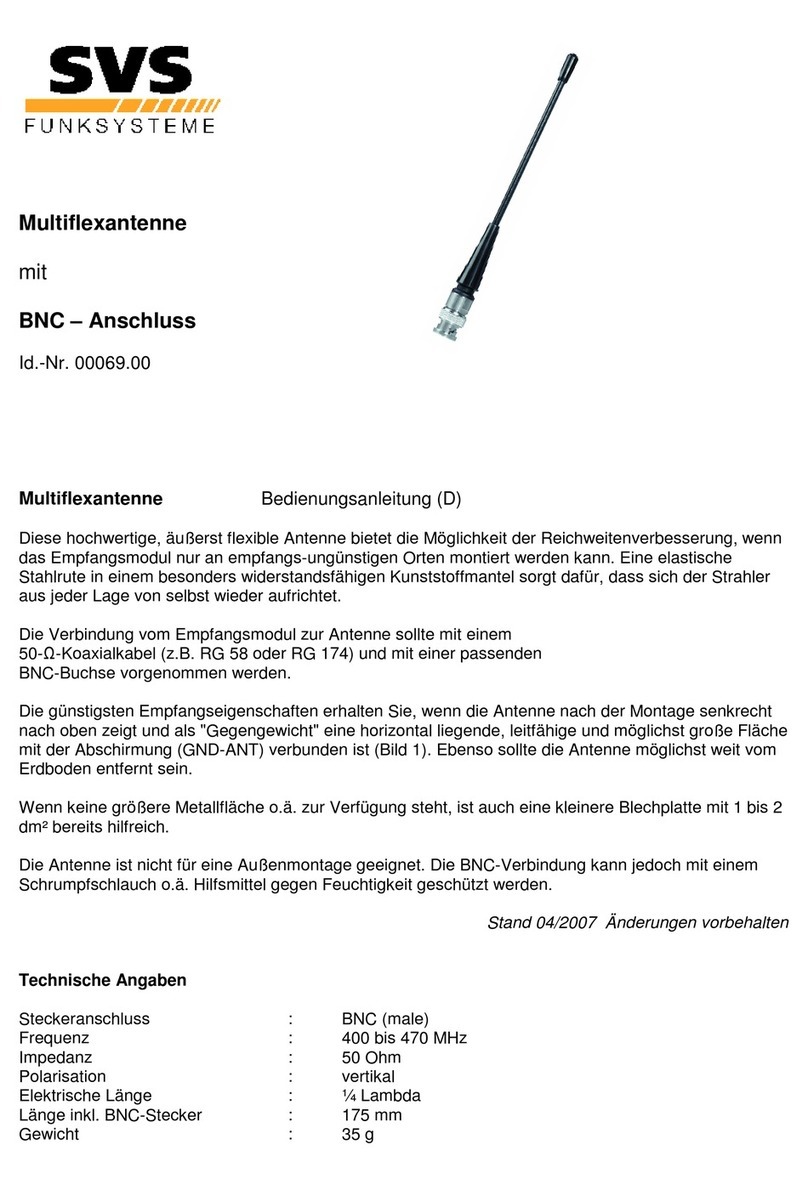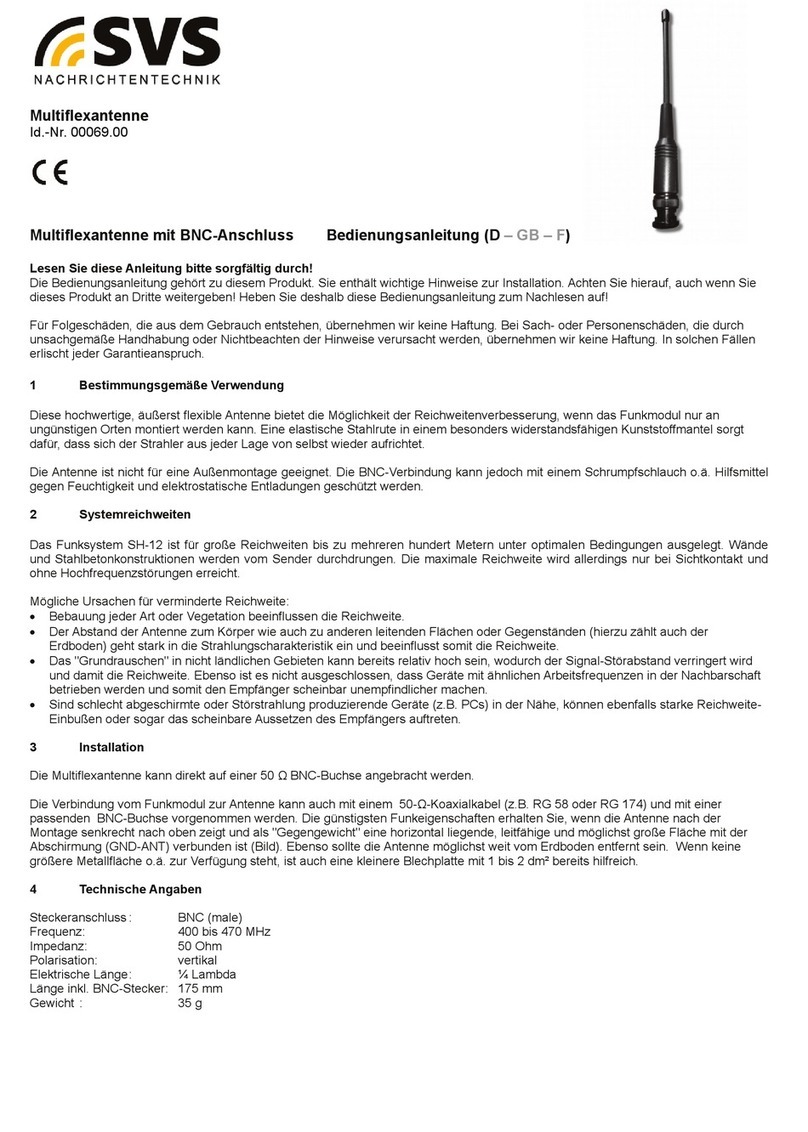Magnetantenne 868 – 870 MHz
Id.-Nr. 00080.00
Magnetantenne Bedienungsanleitung (D – GB – F)
Lesen Sie diese Anleitung bitte sorg ältig durch!
Die Bedienungsanleitung gehört zu diesem Produkt. Sie enthält wichtige inweise zur Installation. Achten Sie hierauf, auch wenn Sie
dieses Produkt an Dritte weitergeben! eben Sie deshalb diese Bedienungsanleitung zum Nachlesen auf!
Für Folgeschäden, die aus dem Gebrauch entstehen, übernehmen wir keine aftung. Bei Sach- oder Personenschäden, die durch
unsachgemäße andhabung oder Nichtbeachten der inweise verursacht werden, übernehmen wir keine aftung. In solchen Fällen
erlischt jeder Garantieanspruch.
1 Bestimmungsgemäße Verwendung
Die Magnetantenne bietet die Möglichkeit der Reichweitenverbesserung, wenn der Empfänger nur an empfangs-ungünstigen Orten
montiert werden kann. Mit dem Magnetfuß kann die Antenne direkt auf eine metallische Unterlage gestellt werden. Für andere
Anwendungen kann die Antenne jedoch auch angeklebt werden.
Die günstigsten Empfangseigenschaften erhalten Sie, wenn die Antenne möglichst weit vom Erdboden entfernt aufgestellt wird und die
Sicht zum Sender ungehindert ist.
2 Systemreichweiten
Das Funksystem S -12 ist für große Reichweiten bis zu mehreren hundert Metern unter optimalen Bedingungen ausgelegt. Wände
und Stahlbetonkonstruktionen werden vom Sender durchdrungen. Die maximale Reichweite wird allerdings nur bei Sichtkontakt und
ohne ochfrequenzstörungen erreicht.
Mögliche Ursachen für verminderte Reichweite:
Bebauung jeder Art oder Vegetation beeinflussen die Reichweite.
Der Abstand der Antenne zum Körper wie auch zu anderen leitenden Flächen oder Gegenständen (hierzu zählt auch der
Erdboden) geht stark in die Strahlungscharakteristik ein und beeinflusst somit die Reichweite.
Das "Grundrauschen" in nicht ländlichen Gebieten kann bereits relativ hoch sein, wodurch der Signal-Störabstand verringert wird
und damit die Reichweite. Ebenso ist es nicht ausgeschlossen, dass Geräte mit ähnlichen Arbeitsfrequenzen in der Nachbarschaft
betrieben werden und somit den Empfänger scheinbar unempfindlicher machen.
Sind schlecht abgeschirmte oder Störstrahlung produzierende Geräte (z.B. PCs) in der Nähe, können ebenfalls starke Reichweite-
Einbußen oder sogar das scheinbare Aussetzen des Empfängers auftreten.
3 Installation
Die Verbindung vom Empfangsmodul zur Antenne kann über den montierten FME-Verbinder oder direktes Anlöten des Koaxialkabels
(Bild) geschehen.
Bei Verwendung eines FME-Einbausteckers ist darauf zu achten, dass die Gesamtlänge des Kabels 5m nicht überschreitet.
Beim Anlöten des Koaxialkabels (Bild1) muss der Innenleiter (ANT) an den Antennenfußpunkt und die Abschirmung (GND-ANT) an
einen möglichst nahe gelegenen Massepin gelegt werden. alten Sie die ungeschirmten Kabelenden möglichst kurz und beachten Sie,
dass das Antennenanschlusskabel in diesem Fall nicht verlängert werden kann!
4 Technische Angaben
Steckeranschluss : FME - Buchse
Frequenz: 868 bis 870 M z
Impedanz: 50 Ohm
Kabel Länge: 2,5 m Koax.-Kabel
Länge mit Magnetfuß: ca. 120 mm
Gewicht : ca. 75 g

























